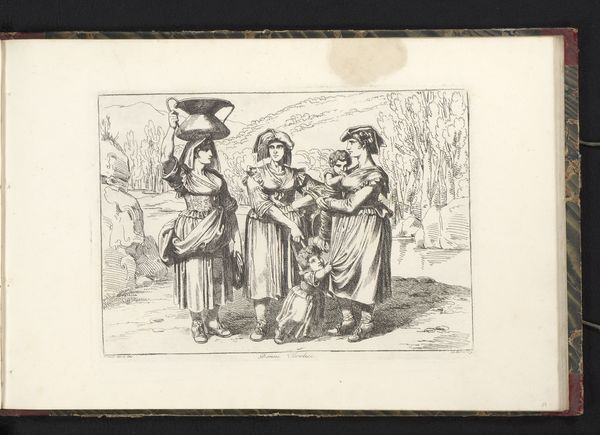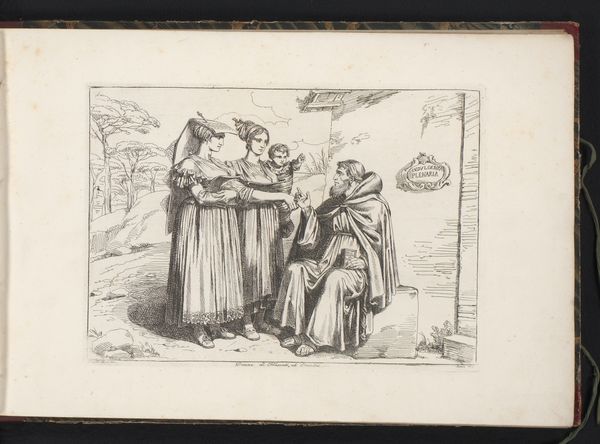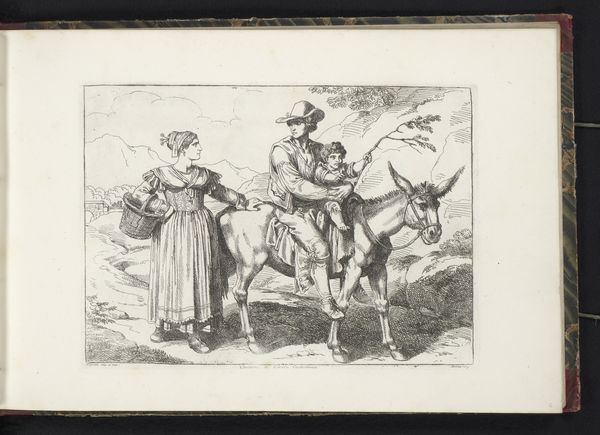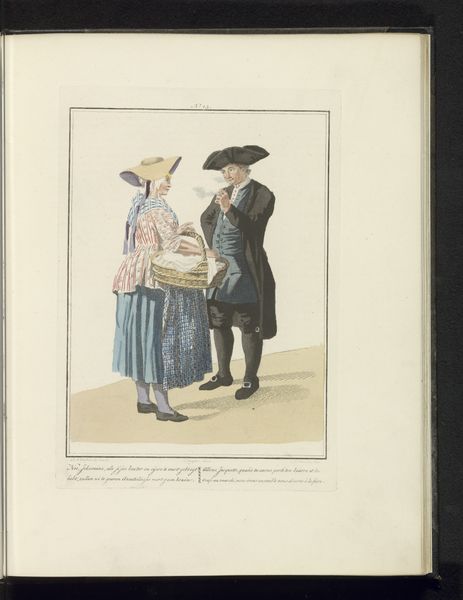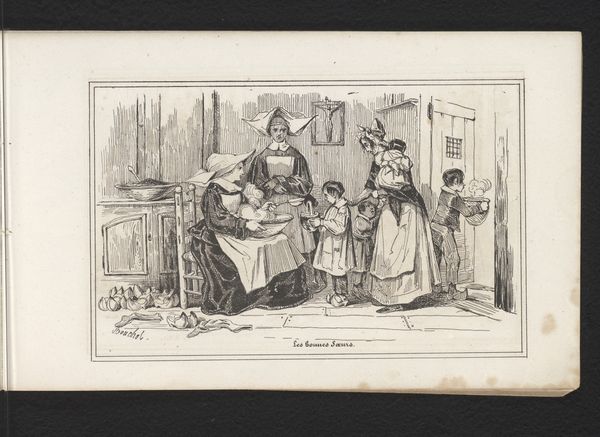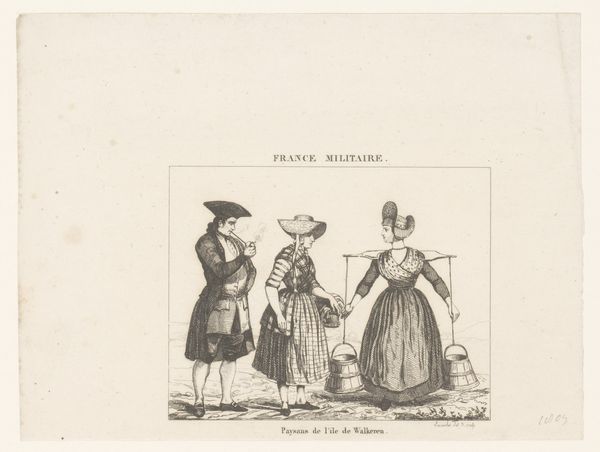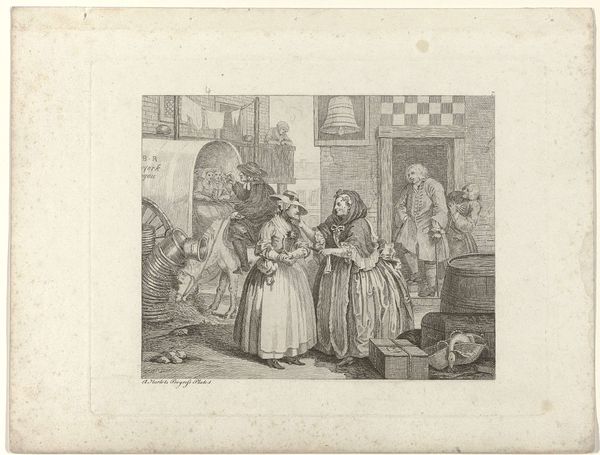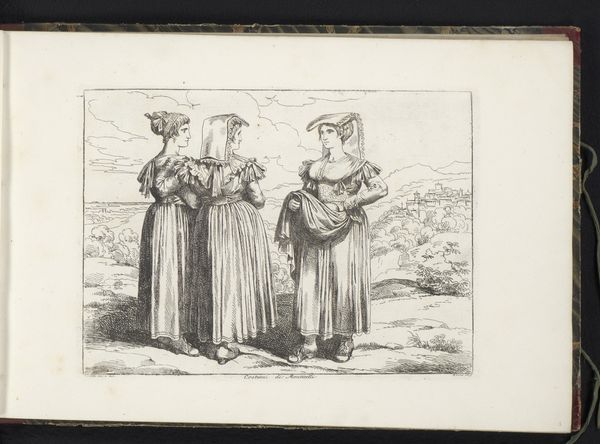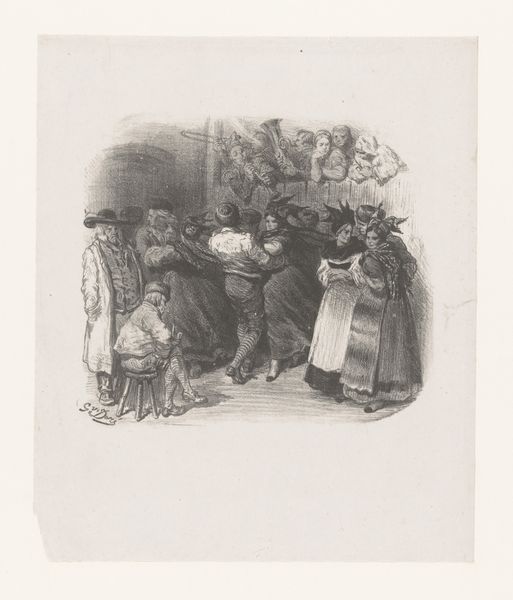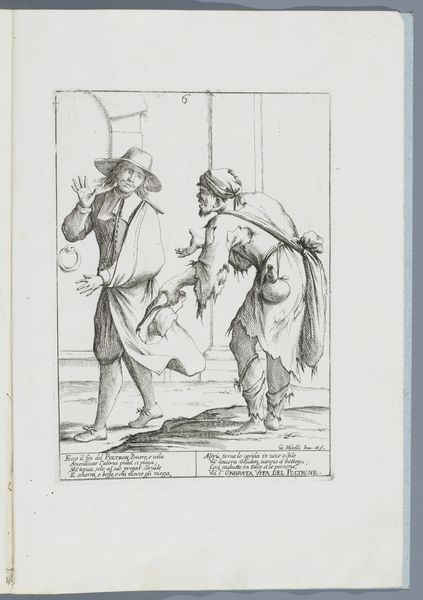
#
pen drawing
#
pen sketch
#
sketch book
#
personal sketchbook
#
pen-ink sketch
#
pen and pencil
#
pen work
#
sketchbook drawing
#
storyboard and sketchbook work
#
sketchbook art
Dimensions: height 207 mm, width 280 mm
Copyright: Rijks Museum: Open Domain
Editor: This is "Terugkeer na de oogst," or "Return after the Harvest," by Bartolomeo Pinelli, created in 1819. It seems to be a pen drawing, perhaps from a sketchbook. What I notice is the juxtaposition of these women, likely returning from the fields, with the classical architecture behind them. How do you interpret this work? Curator: The scene evokes a powerful dialogue between past and present, doesn't it? These women, bearing the weight of the harvest on their heads, are physically connected to the land, to labor, and to a tradition perhaps as old as those Roman ruins. Their attire and labor echo an age-old cycle, but are set against a backdrop of enduring Roman grandeur. Do you notice any symbolic relationship there? Editor: It’s as if they are carrying not just produce, but the weight of history itself. Is Pinelli trying to make a statement about the persistence of certain societal structures? Curator: Precisely. The artist might be commenting on the enduring nature of work, of societal roles, even as empires rise and fall. Consider the symbolic weight of the baskets they carry. They are containers of sustenance, vessels of labor, mirroring the cyclical nature of life itself. In what ways can a simple scene embody centuries of human experience, do you think? Editor: I see what you mean. It's not just a depiction of a moment in time, but a layered commentary on continuity and change. I hadn't really considered the symbolism inherent in their roles and burdens, contrasted with the Roman ruins behind them. Curator: Every element is a carrier of cultural memory, offering us a chance to reflect on what lasts and what fades. This piece speaks volumes about resilience, doesn't it? Editor: Definitely. It’s made me rethink how everyday scenes can carry so much cultural significance. Thanks for helping me see those connections.
Comments
No comments
Be the first to comment and join the conversation on the ultimate creative platform.

